How Do You Know if Your Oxygen Sensor Is Going Bad With Scanner
Our editors pick the products & services nosotros write about. When you buy through our links, nosotros may go a commission. Larn more.
Malfunctioned O2 sensors cause over l pct of smog or emission test failures. A bad oxygen sensor tin drain your pocket due to the negative impact on your vehicle. Therefore, you must know how to test your oxygen sensor to determine whether it is working well or is faulty.
Bonus: NEXPEAK NX501: O2 Evap I/M Readiness OBD2 Scanner with Mode 6 Review
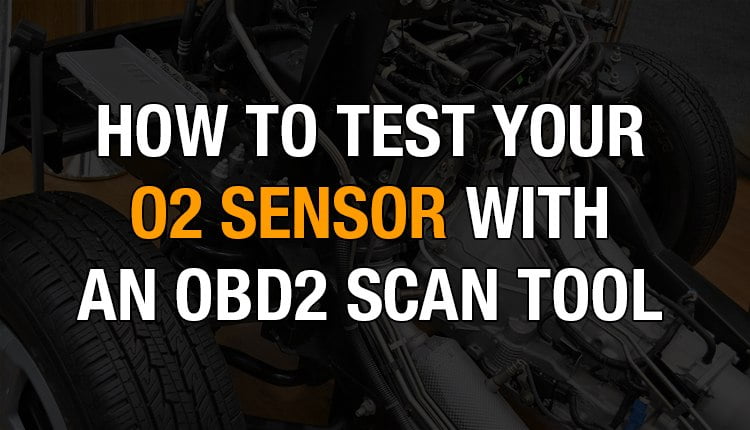
Tool needed: an OBD2 scanner with O2 sensor examination like FOXWELL NT301 or Bluedriver.
FOXWELL NT301
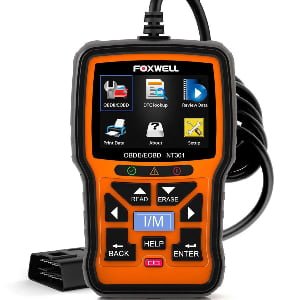
Bluedriver
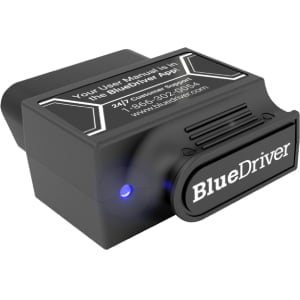
Step one: Connect The OBD2 Scanner To Your Car
With an OBDII scan tool connected to your car, note the O2 sensor voltage with the Cardinal On Engine Off and the Engine Running. You should observe that the O2 sensor voltage should fluctuate as you drive the vehicle, typically betwixt zero and 1volt. For the beginning ten minutes, the longer you bulldoze it, the more it volition fluctuate. On newer air/fuel ratio sensors, their functioning varies between manufacturers. Some operate with varying voltage, while others produce a varying amperage signal.
Step 2: Notice The Fluctuation Of The Voltage Of O2 Sensors
Forth with voltage, you should notice how quickly it fluctuates between a low voltage (typically less than .5v) to a college voltage (more .5v). This fluctuating or toggling will typically occur between two and 5 times a 2nd. If the voltage always stays below .5 volts, then a lean exhaust code would be set. Conversely, if the voltage remains high, above .v volts, a rich exhaust code would be set.
Step iii: Determine The Code Type
Make up one's mind the type of lawmaking.
If the code points to a lean running engine, go to step iv.
If the code points to a rich running engine, go along to pace v.
Step iv: Test An O2 Sensor – LEAN Running Engine
Kickoff, obtain a propane canteen and attach a valve to the canteen. Attach a hose to the valve and feed the hose into the air intake (open the air cleaner housing and insert the hose into the tube headed away from the air filter housing. Slowly open the valve while monitoring the O2 voltage on your scan tool. The voltage must rising higher up .8 volts. If the voltage readings are attained, and then the O2 sensor is not your probable culprit. Go back over engine basics to determine if any conditions could crusade the engine to run rich (high fuel pressure, vacuum not nowadays at the MAP (Manifold Absolute Pressure) Sensor, if equipped). If the voltages are not attained, the most likely cause for the readings is a failed O2 sensor. If the mileage is high or the O2 sensor is old, and due for replacement, this would be the about likely crusade of failure. If the O2 sensor is relatively new, more diagnostics would be indicated, such as leaking coolant into the exhaust or possibly the wrong RTV sealant was used during a prior engine gasket replacement.
Pace v: Examination An O2 Sensor – RICH Running Engine
Get-go, disconnect a small-scale vacuum hose from the engine (large enough to cause the engine to run slightly rough, not large enough to cause the engine to dice). And so, monitor O2 voltage on the scan tool. You should notice the voltage drib beneath .2 volts and stay low. If yous've got the voltage readings, and so the O2 sensor is not your probable culprit. Go back over engine nuts to make up one's mind if whatsoever conditions could cause the engine to run lean (depression fuel pressure, intake manifold/exhaust manifold leaks, leaks effectually O2 sensor, etc.). If the voltages are not attained, the most likely cause for the readings is a failed O2 sensor. If the mileage is high or the O2 sensor is old, and due for replacement, this would be the most likely cause of failure. If the O2 sensor is relatively new, more diagnostics would be indicated, such equally leaking coolant into the exhaust or possibly the wrong RTV sealant was used during a prior engine gasket replacement.

Bonus: All-time Professional Automotive Diagnostic Scanner 2020/2021 [Review]
O2 Sensor Codes Interpretation
O2 sensor codes that this data could be useful in diagnosing
P0130 02 Sensor Circuit Malfunction (Depository financial institution I Sensor 1)
P0131 02 Sensor Excursion Low Voltage (Banking company I Sensor I)
P0132 02 Sensor Circuit Loftier Voltage (Banking concern I Sensor i)
P0133 02 Sensor Circuit Wearisome Response (Bank ane Sensor ane)
P0134 02 Sensor Circuit No Activity Detected (Bank I Sensor ane)
P014C O2 Sensor Slow Response – Rich to Lean (Bank 1 Sensor i)
P014D O2 Sensor Slow Response – Lean to Rich (Bank 1 Sensor ane)
P014E O2 Sensor Slow Response – Rich to Lean (Banking concern 2 Sensor 1)
P014F O2 Sensor Slow Response – Lean to Rich (Banking company 2 Sensor ane)
P0150 02 Sensor Circuit Malfunction (Bank 2 Sensor one)
P0151 02 Sensor Circuit Low Voltage (Bank ii Sensor 1)
P0152 02 Sensor Circuit High Voltage (Bank 2 Sensor i)
P0153 02 Sensor Excursion Wearisome Response (Bank 2 Sensor 1)
P0154 02 Sensor Circuit No Activity Detected (Depository financial institution 2 Sensor 1)
P015A O2 Sensor Delayed Response – Rich to Lean (Bank one Sensor i)
P015B O2 Sensor Delayed Response – Lean to Rich (Bank 1 Sensor 1)
P015C O2 Sensor Delayed Response – Rich to Lean (Bank 2 Sensor one)
P015D O2 Sensor Delayed Response – Lean to Rich (Bank 2 Sensor 1)
P0171 / P0174 O2 Sensor has detected a Lean Exhaust Banking concern 1 / Bank 2
P0172 / P0175 O2 Sensor has detected a Rich Exhaust Bank 1 / Depository financial institution 2
To know exactly what each lawmaking means, employ the DTC Look-up Library of your scan tool or go to OBD2 Codes, search the problem codes you have on the "Search Box." You will observe the Meaning, Symptoms, Causes, and Diagnostic Steps of the codes you have.
O2 Sensor: What Is It For?
An oxygen sensor is in the exhaust stream. Its role is to monitor the air/fuel ratio in real-time to determine whether it is lean or rich. This means measuring the amount of oxygen in the liquid or gas passing through the exhaust manifold.
Many people misunderstand the measuring process. The sensor does not mensurate the concentration of oxygen. Instead, information technology measures the difference between oxygen in the air and oxygen in the exhaust gas.
Apart from determining the air/fuel ratio, an O2 sensor tin can decide whether the catalytic converter is working well. The sensor can adjust the air/fuel ratio to ensure the catalytic converter is working efficiently.
Once the ratio is determined, a voltage is created, and it flows through the o2 sensor, sending the reading to the CPU. The CPU then adjusts the ratio according to what is appropriate. This reduces exhaust emissions, thus contributing to a healthier environment.
Tampering with the O2 sensor signal could negatively impact emissions control since it controls emissions. Additionally, it tin can also crusade harm to the vehicle. For example, a faulty O2 sensor tin damage the catalytic converter.
Bosch 11027 Universal Oxygen Sensor

Denso12594452 Oxygen Sensor

Types Of O2 Sensors
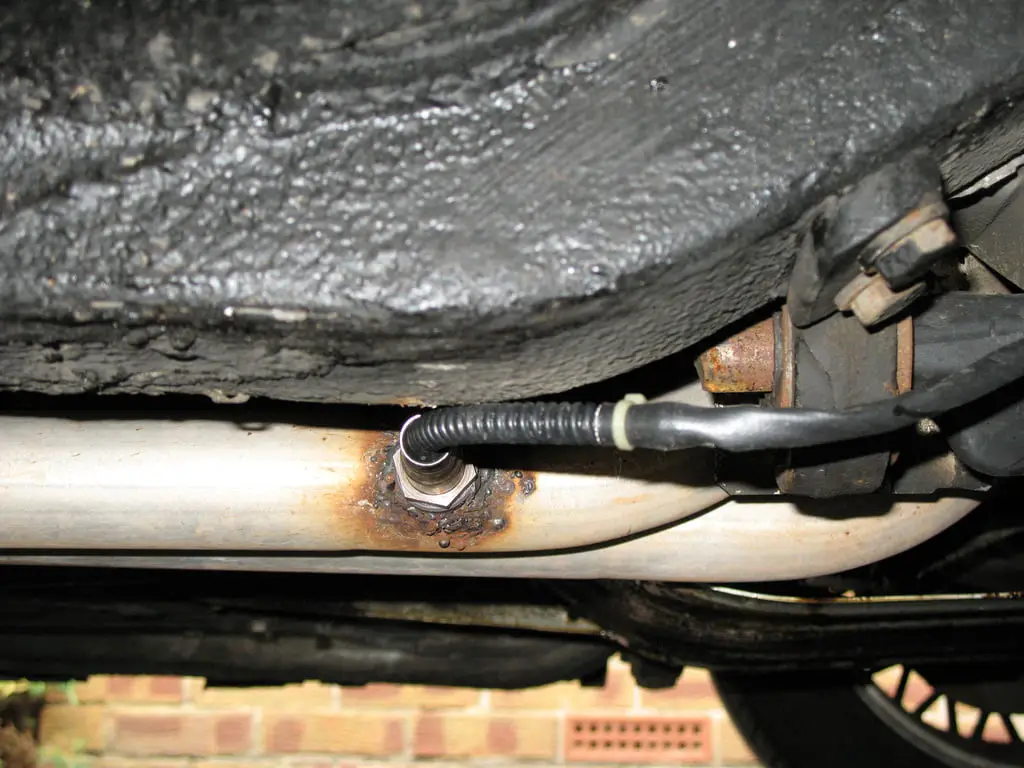
Credit: commons.wikimedia.org
Oxygen sensors can either be heated or unheated. However, in modernistic times, heated oxygen sensors are more common in vehicles.
Unheated oxygen sensors are found in old vehicles, up to the 1990 models. These sensors need to be replaced more frequently compared to heated oxygen sensors. It is advised that the sensors exist replaced after every 30,000 to 50,000 miles.
Heated oxygen sensors are establish in modern vehicles, from the 1990 models up to present. These sensors are more durable and should be replaced after every threescore,000 to 90,000 miles.
Since oxygen sensors are exposed to harsh conditions, they should be replaced at the appropriate time to avoid bug.
KAX 250-24612 Heated Oxygen Sensor Downstream

Denso 234-9021 Heated O2 Sensor Upstream

Bad O2 Sensor Symptoms
Various signs hint your vehicle has a trouble with its oxygen sensor. Some of these signs include:
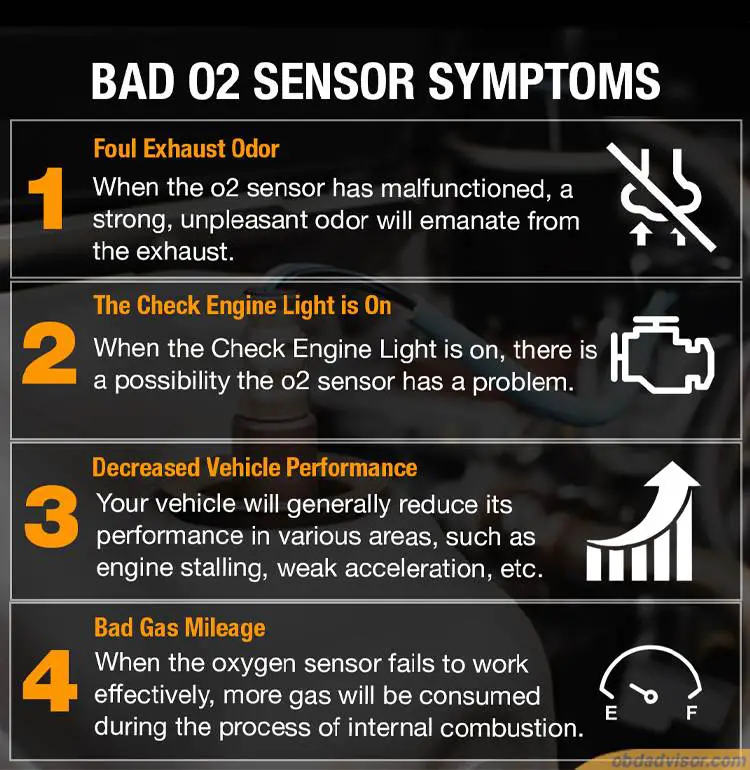
1) Foul Exhaust Odor
When the o2 sensor has malfunctioned, a strong, unpleasant olfactory property will emanate from the exhaust. If the trouble is not dealt with immediately, the smell could spread to the vehicle's interior. This would be such an embarrassing situation.
2) The Check Engine Light is On
The Check Engine Light is an indication that there is a problem with the vehicle. Although it does not specifically mean that the problem lies with the oxygen sensor, there is a possibility the o2 sensor has a trouble. Ever get your vehicle checked immediately when you lot notice the lite is on.
iii) Decreased Vehicle Performance
Your vehicle will generally reduce its operation in various areas. Yous may experience engine stalling and weak acceleration. Additionally, you may notice the engine runs roughly or irregularly even when information technology is idle.
iv) Bad Gas Mileage
Have you noticed y'all fill up your gas tank more than often than you usually do? This may be due to inadequate gas mileage. When the oxygen sensor fails to work effectively, the mixture of fuel and air will be rich.
A rich mixture of fuel and air means more gas is consumed during the process of internal combustion. This ways a higher fuel consumption of gas and digging deeper into your pockets.
The Lesser Line
Never ignore any signs of failure of the oxygen sensor. The earlier the problem is diagnosed, the better.
Solving o2 sensor problems at an early stage will enable y'all to save, financially, since at that place would be footling to no damage to your car. Additionally, you lot will salvage on the amount of gas you lot use while driving.
If you find information technology challenging to utilise the OBD scan tool, have your car to a good mechanic to check it out.
Read more: Bad Camshaft Position Sensor: Symptoms, Causes, Test, and Fixes
Source: https://www.obdadvisor.com/test-o2-sensor-with-scanner/
0 Response to "How Do You Know if Your Oxygen Sensor Is Going Bad With Scanner"
Post a Comment